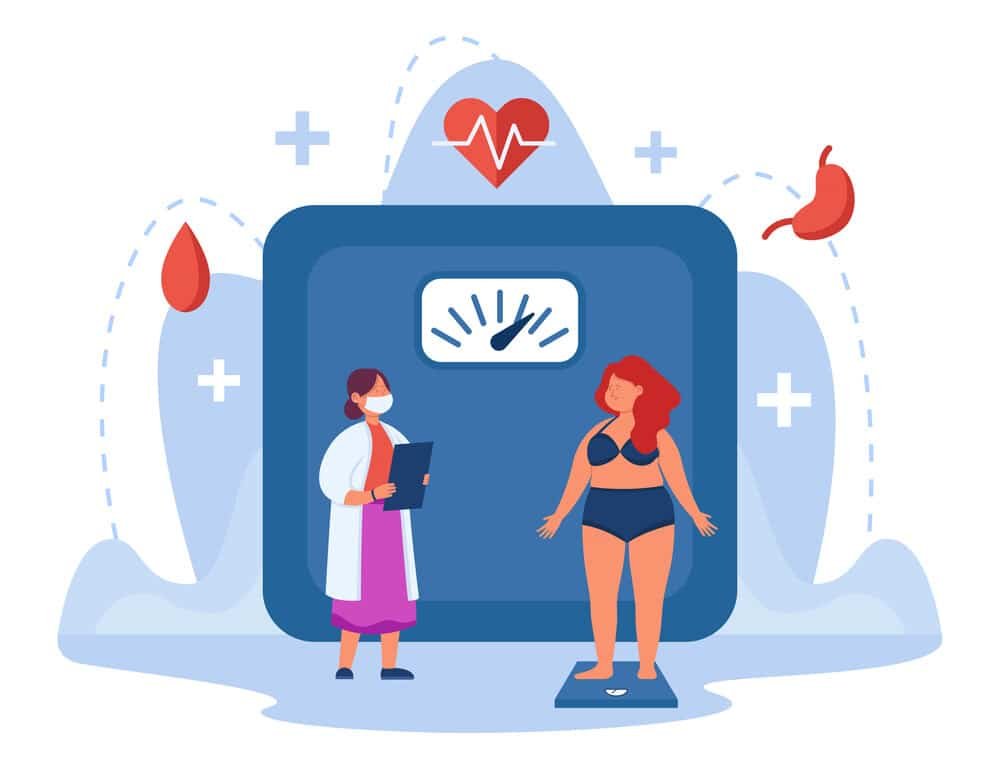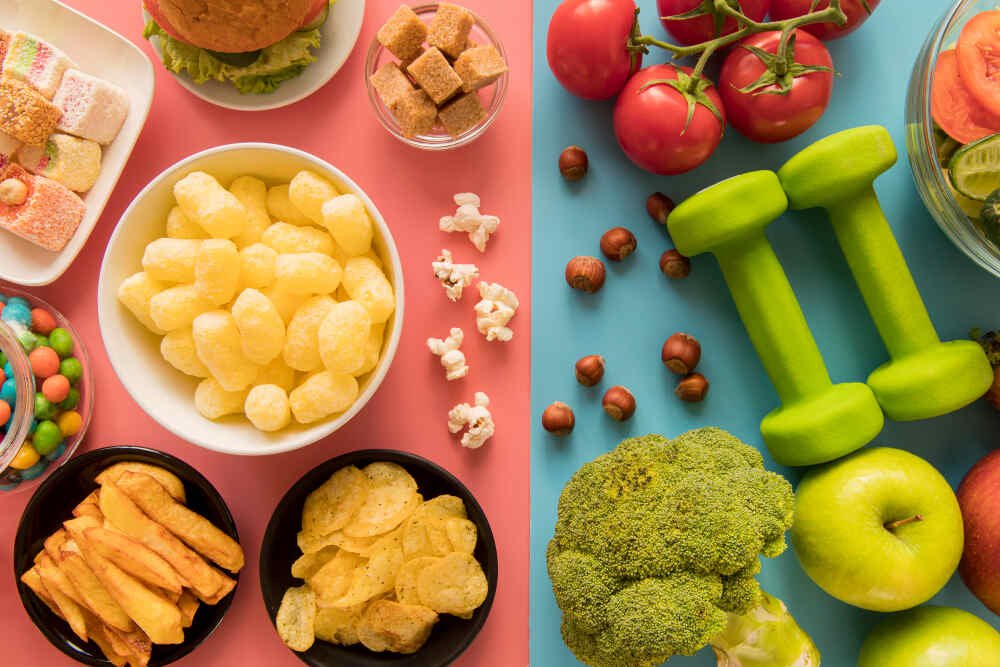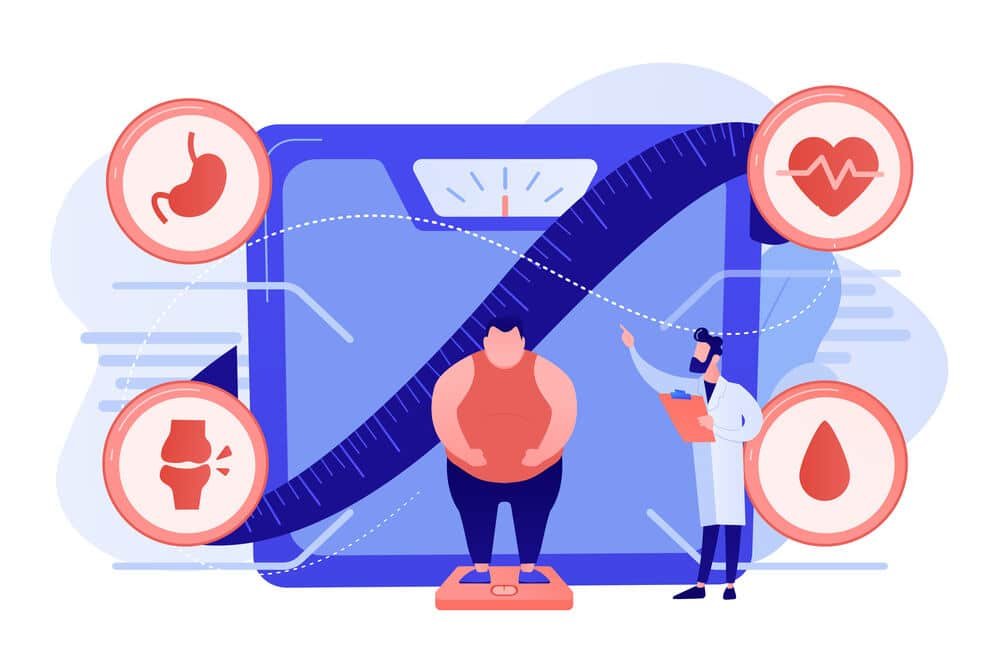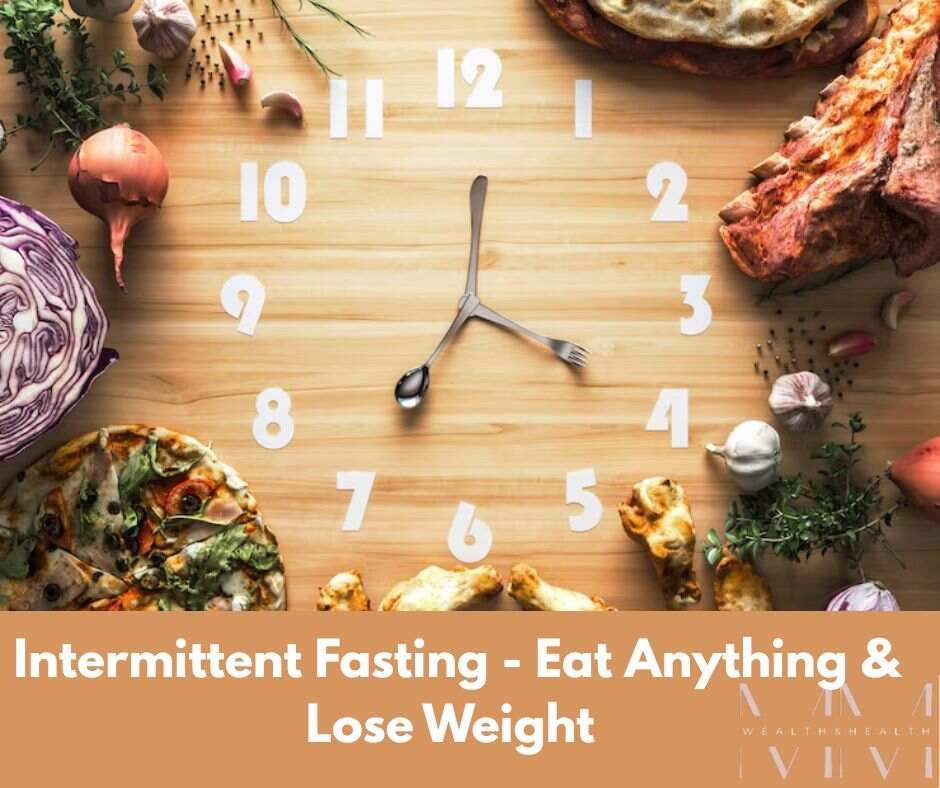The Tempting Promise of “Eat Anything”
You’ve probably heard this question: “Can You Really Eat Anything While Intermittent Fasting and Still Lose Weight?” But is it true? and this topic has gone viral on social media like a storm.
You wake up, skip breakfast, enjoy a burger and fries for lunch, and feast on pizza for dinner, all while losing weight thanks to intermittent fasting. Sounds too good to be true.
Good news! – The short answer is Yes, but with significant caveats. Intermittent fasting (IF) can help you lose weight even if you eat junk food if you maintain a calorie deficit.

However, you won’t get the full health benefits of intermittent fasting, like improved insulin sensitivity, heart health, or sustainable fat loss.
Intermittent fasting (IF) works by restricting your eating window, which naturally leads to fewer calories consumed. But, if you fill that window with junk food, you might disrupt your long term benefits.
This guide dives deep into:
The science behind time-restricted eating and metabolism
Why food choices matter more than you think
How to enjoy your favorite foods without sabotaging progress
Expert strategies from registered dietitians and researchers like Krista Varady
Let’s settle this debate once and for all!
How Intermittent Fasting Works for Weight Loss
1. Time-Restricted Eating Creates a Calorie Deficit
Intermittent fasting isn’t magic, it’s a structured eating pattern that helps you consume fewer calories without obsessive counting.
A systematic review of intermittent fasting diets found that most people naturally eat 20-30% less due to a shorter eating window.
Example: If you normally snack from 7 AM to 10 PM (15 hours), switching to a 16:8 fasting schedule (eating only from 12 PM–8 PM) cuts out mindless eating.
Bottom line: Weight loss happens in a calorie deficit, whether you eat whole grains or donuts.
2. Fasting Improves Insulin Sensitivity & Fat Burning
When you fast for 12+ hours, your body enters a fasted state, leading to:
During the fasted state, insulin levels drop, allowing your body to burn fat stores for energy.
Studies show that insulin resistance improves with fasting, helping regulate blood sugar levels and reducing high cholesterol and other related heart disease.

However, junk food during eating periods can spike insulin, counteracting these benefits of intermittent fasting.
Increased growth hormone, preserving muscle mass while losing fat.
However, no matter how hard or simple ways you try, junk food in your eating window can spike insulin, halting fat burning.
Can You Really Eat Anything While Intermittent Fasting and Still Lose Weight
As mentioned earlier Yes, technically, you can lose weight by eating pizza and burgers if you maintain a calorie deficit. A registered dietitian might say: “Weight loss is about energy balance, if you eat fewer calories than you burn, you’ll lose weight.”
The CICO Reality – Yes, Calories Still Rule the Game
If you’ve ever heard someone, say, “It’s all about calories in vs. calories out,” they’re not wrong. That’s the basic physics of weight loss. Eat fewer calories than you burn, and you’ll lose fat. Period.
So yes, theoretically, you could eat two Snickers bars and a cheeseburger during your eight-hour period, stay within your daily calorie intake, and still drop pounds.
But just because something works on paper doesn’t mean it’s good for your body or your sanity.
Example:
Let’s say your body burns 2,000 calories per day. If you eat 1,800, even if those 1,800 come from nachos and soda, you’re technically in a calorie deficit and you might lose weight.
But what you won’t see right away is the havoc it’s wreaking on your blood sugar levels, your immune system, your cravings, and your energy. Weight might be dropping, but health is silently eroding.
Junk Food and Fasting – A Troubled Relationship
Here’s where things get real.
Yes, you can eat junk food while fasting. But should you? That’s another question entirely.
Let’s take a look at what’s really happening inside your body when your eating window is filled with processed, high-sugar, low-nutrient foods.
Blood Sugar Rollercoaster
Fast food and sugary snacks send your blood sugar levels soaring, followed by a dramatic crash. This leaves you moody, sluggish, and far hungrier during your fasting period than you should be.
And over time? It worsens insulin resistance, a key player in type 2 diabetes, weight gain, and even chronic disease.
Hunger Comes Roaring Back
That Big Mac might feel satisfying at the moment but won’t keep you full of lean protein and healthy fats. It is low in fiber and lacking in nutrients, it won’t keep you full. You’ll be ravenous again in no time, probably tempted to break your fast early the next day.

Compare that to a bowl of lentils, grilled salmon, and roasted veggies, foods that fuel your body and keep hunger at bay. Satiety matters just as much as calories.
Health Risks Don’t Take a Break
Even if the scale says you’re doing great, your heart may not agree. Eating habits filled with junk food are still linked to high blood pressure, high cholesterol, and an increased risk of cardiovascular disease, no matter when you eat it.
So while your jeans might fit better, your arteries may be narrowing. It’s the silent trade-off that’s not worth it.
The 80/20 Rule – Where Freedom Meets Nutrition
Now, before you swear off cookies and fries forever breathe. The goal here isn’t perfection. It’s balance.
Enter the 80/20 rule, a great way to enjoy life and see better results.
80% of your meals: Think healthy eating like herbal tea, lots of vegetables, whole grains, lean protein like eggs or fish, and healthy fats from avocado or nuts. These foods give your body what it needs to thrive, especially after long periods of fasting.

20% of your meals: Go ahead and enjoy your favorite foods. Have the ice cream, grab a slice of pizza, just don’t make it the main act every day. When you’re eating well most of the time, indulgences won’t ruin your progress.
This rule doesn’t just help with weight management, it also improves your relationship with food. You stop seeing treats as “bad” and start enjoying them in moderation. That’s what builds sustainable change.
A Real-Life Day on 16:8 Intermittent Fasting
Want to know what this balance looks like in real life? Here’s a sample eating schedule during a 16:8 intermittent fasting plan:
12:00 PM (First Meal): Grilled chicken breast, cooked quinoa, roasted zucchini, and half an avocado. Nourishing and satisfying.
3:00 PM (Snack): Plain Greek yogurt topped with berries, walnuts, and a drizzle of honey. High in protein, fiber, and healthy fats.
7:00 PM (Last Meal):
Pan-seared salmon roasted sweet potato, and steamed broccoli with olive oil. Perfect way to fuel your body before the fast begins again.
Fasting Period (8 PM – 12 PM the next day): Stick to water, herbal teas, or black coffee. No calories, no problem.
Notice anything? No starvation. No suffering. Just smart food choices and a little structure.
5 Critical Mistakes That Prevent Weight Loss
Let’s walk through five common pitfalls that often fly under the radar, and exactly how to sidestep them.
1. Overeating in the Eating Window
It’s tempting to think that fasting gives you a free pass to eat as much as you want when the clock strikes noon. After all, you’ve just gone 16 hours without food, why not dive headfirst into that massive burrito or stack of pancakes?
But here’s the catch: your body still works on the calories in, calories out principle. If you consume more than you burn, even within a short eating window, you’ll eventually gain weight or stall progress.
That’s why it’s essential to approach mealtime with mindfulness. Instead of stuffing your plate, try using smaller ones to naturally limit portion sizes. Load up on healthy foods that actually nourish your body, like lean protein, whole grains, and fiber-rich vegetables, so you leave the table satisfied, not stuffed.
2. Choosing Processed Over Whole Foods
It’s easy to assume that the timing of meals matters more than the quality of what’s on your plate. But that’s one of the biggest mistakes people make with intermittent fasting diets.
Dr. Krista Varady, a leading researcher in alternate-day fasting, has consistently shown in human studies that those who choose whole, nutritious foods see dramatically better results, not just in terms of fat loss, but also in improved blood sugar levels, insulin sensitivity, and heart health.
Processed foods, think frozen pizzas, chips, and boxed mac & cheese, are often high in calories but low in nutrients. They spike your insulin, offer little satiety, and set the stage for future cravings.
Instead, build your meals around real food: eggs for breakfast, leafy greens in your salads, berries for a sweet fix, nuts for snacking, and olive oil for cooking. It’s not just about losing weight, it’s about building the foundation for long-term health.
3. Ignoring Protein and Fiber
Protein isn’t just for bodybuilders. It’s absolutely essential if you want to lose fat and keep it off. When you’re fasting, especially over long periods, your body starts dipping into energy stores, which, if you’re not careful, can include muscle mass.
By prioritizing lean protein, like grilled chicken, tofu, eggs, or fish, you preserve muscle while your body targets fat. Muscle helps burn more calories, even at rest, so keeping it is key to maintaining a healthy weight and long-term results.
Fiber is equally powerful. It slows digestion, keeps you feeling full longer, and helps manage blood sugar spikes, all of which reduce overeating during your eating periods. Think of foods like brown rice, lentils, vegetables, and fruits as your secret weapons.
Compare this: a chicken stir-fry with brown rice and broccoli vs. a fast-food cheeseburger. The stir-fry fuels your body, keeps you full, and supports weight management. The burger? It satisfies short term but leaves you crashing soon after.
4. Drinking Your Calories
Let’s face it: drinks don’t always feel like “real” calories. But a single sweetened latte, soda, or even that fancy smoothie can pack in 300–500 hidden calories, often enough to wipe out your entire calorie deficit for the day.
What’s worse, artificial sweeteners in diet sodas or “sugar-free” coffee creamers can confuse your body’s hunger cues and sometimes even trigger an insulin response, making fasting feel harder and less effective.
The solution? Keep it clean and simple during your fast. Drink water, sip on unsweetened tea, or go for black coffee if you need a pick-me-up. These keep you in a fasted state without messing with your progress.

And if you love flavor? Try infusing your water with lemon, cucumber, or mint for a refreshing, zero-calorie boost. It’s a small change that brings big benefits.
5. Not Moving Enough
Here’s the uncomfortable truth: even the best intermittent fasting protocol won’t do the heavy lifting for you. If you’re spending most of your day sitting at a desk and then lounging on the couch, you’re leaving fat loss on the table.
Physical activity is what accelerates results. It improves insulin sensitivity, boosts your metabolism, supports heart health, and helps preserve muscle mass. Even walking 10,000 steps a day can dramatically shift the needle over time.
And you don’t need a hardcore gym routine. Dance in your kitchen, take the stairs, stretch between Zoom calls, or go for a brisk walk after meals. Movement helps your body utilize the food you eat more effectively—and that’s especially important in time-restricted eating.
So if you’re feeling stuck, get moving. You’ll not only burn more fat, but you’ll also feel better mentally, sleep more soundly, and keep your energy steady throughout the day.
3 Most Popular Types of Intermittent Fasting – Which One Fits You Best?
Intermittent fasting (IF) isn’t a one-size-fits-all strategy. It comes in different styles, each with its own fasting period, eating window, and benefits especially on weight management. Choosing the right one can make a huge difference in your weight loss journey, metabolic health, and lifestyle sustainability.
Below, we break down the three most popular intermittent fasting methods, 16:8, 5:2 (Alternate-Day Fasting), and OMAD (One Meal a Day)—so you can decide what fits your goals, routine, and body best.
16:8 Intermittent Fasting
Fasting Period: 16 hours
Eating Window: 8 hours
Best For: Beginners, sustainable fat loss, maintaining muscle mass

Why It Works
The 16:8 method is the most popular and beginner-friendly intermittent fasting protocol. You fast for 16 hours (including overnight) and then eat during an 8-hour window, for example, from 12 pm to 8 pm.
It’s an easy way to naturally reduce daily calorie intake, control late-night snacking, and allow your body to spend more time in the fasted state, promoting fat burning and better insulin sensitivity.
Pro Tip: Break your fast with nutritious foods like lean protein, whole grains, and healthy fats to avoid insulin spikes and support long-term health benefits.
Health Benefits:
Promotes fat loss without muscle loss
Helps regulate blood sugar levels
May reduce risk of heart disease and improve insulin sensitivity
Supports weight management and healthy eating habits
5:2 Fasting (Alternate-Day Fasting)
- Fasting Days: 2 non-consecutive days (eating only 500–600 calories)
- Normal Eating: 5 days per week
- Best For: Flexible eaters, gradual weight loss, breaking plateaus
Why It Works:
The 5:2 method, also called Alternate-Day Fasting, is perfect for those who prefer not to fast daily. On two fasting days of the week (say Monday and Thursday), you significantly reduce your calorie intake to around 500–600 calories. On the other five days, you eat normally without calorie counting, but healthy choices still matter.
This method creates a weekly calorie deficit without making you feel like you’re dieting every day. It’s been shown in human studies to help reduce body fat, improve insulin sensitivity, and support cardiovascular health.
Smart Tip: On fast days, opt for high-fiber veggies, lean protein, and plenty of water or black coffee to stay full and hydrated.
Health Benefits:
Enhances fat-burning over time
Improves immune system function
May reduce chronic conditions like high blood pressure and high cholesterol
Suitable for people with busy schedules
3. OMAD – One Meal a Day
- Fasting Period: 23 hours
- Eating Window: 1 hour
- Best For: Advanced fasters, rapid weight loss, deep metabolic reset
Why It Works:
OMAD is a powerful form of time-restricted eating, where you fast for 23 hours and consume all your daily calories in one big meal—typically dinner. This method is highly effective for fat loss, improving insulin resistance, and achieving a calorie deficit quickly.
But beware: OMAD isn’t for everyone. If you have a history of an eating disorder, chronic disease, or certain medical conditions, always consult your health care provider first. It requires discipline and mindful eating to ensure you’re getting enough nutrients in a short time window.
Nutrition Tip: Your one meal should include a balance of lean protein, healthy fats, whole grains, and colorful vegetables to avoid nutrient deficiencies.
Health Benefits:
Drastically reduces food intake while preserving energy
May improve insulin sensitivity, blood sugar regulation, and mental clarity
Can lead to better results for people struggling with stubborn fat
Reduces exposure to artificial sweeteners, snacks, and junk food
Must try book in Amazon Kindle for women
If you’ve been feeling stuck with dieting or wondering why nothing seems to work, Intermittent Fasting for Women could be the breakthrough you’ve been looking for. This book gently guides you through a smarter, hormone-friendly way to lose weight, boost energy, and feel more in tune with your body—without counting every calorie or giving up the foods you love. It’s written with real women in mind, busy schedules, cravings, and all—and helps you build a rhythm that actually feels doable. If you’re ready to stop the cycle and feel confident in your skin again, this is where it starts.
Expert Strategies to Lose Weight Without Deprivation
1. Prioritize Protein at Every Meal
Protein is key for fat loss and weight management; it helps keep you full during long fasting periods and aids in maintaining muscle mass. Include lean protein like eggs, chicken, lentils, or fish in every meal during your eating window to naturally reduce your daily calorie intake and boost your metabolism. It’s a simple shift that supports healthy weight without feeling deprived.
2. Use Mindful Eating Techniques
Slow down, chew your food thoroughly, and eat without distractions to avoid overeating during your eating periods. Mindful eating helps you stop at 80% fullness, making it easier to consume fewer calories and stay in control of your food intake. This technique pairs perfectly with intermittent fasting plans by enhancing your connection to hunger cues while supporting long-term healthy eating habits.
3. Allow Controlled Indulgences
You don’t have to quit your favorite foods to lose weight, just enjoy them in moderation. Following the 80/20 rule (80% nutritious foods, 20% favorites) lets you satisfy cravings without ruining progress. It fits seamlessly into time-restricted eating schedules and supports better food choices while reducing the risk of bingeing or unhealthy eating patterns.
4. Adjust Based on Results
If weight loss slows down, don’t panic, tweak your intermittent fasting schedule instead. For example, shifting from a 14:10 to a 16:8 eating window increases your fasting period and may help create a stronger calorie deficit. Track your results, watch your food intake, and make small changes to your eating schedule to stay on track without unnecessary restrictions.

5. Consult a Healthcare Provider
If you have chronic conditions like diabetes, high blood pressure, or a history of an eating disorder, talk to a healthcare provider before starting any intermittent fasting protocol. A registered dietitian can help you build an eating plan that supports your specific needs, manages blood sugar levels, and delivers the full health benefits of intermittent fasting, safely and effectively.
Conclusion
Yes – If you maintain a calorie deficit, even junk food won’t stop weight loss. But You’ll feel hungrier, lose less fat, and risk chronic disease.
For Best Results:
✔ Follow an intermittent fasting plan with healthy meals.
✔ Use time-restricted eating to naturally cut calories.
✔ Enjoy treats in moderation—balance is key!
Need help? Consult a health care provider or registered dietitian before starting.
What’s your experience? Can you eat anything while fasting and still lose weight? Share below!



